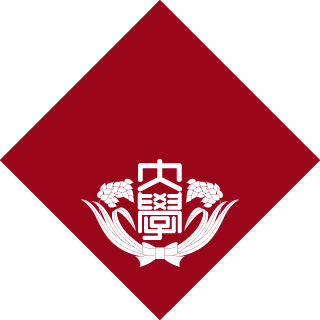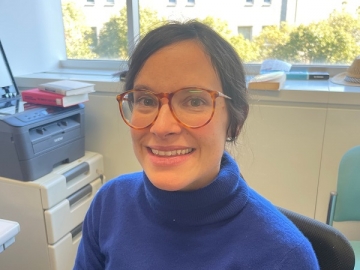
Clean energy, lower carbon
With all the growing concern and urgency about carbon emissions and their effect on climate change, people around the world are searching for power technologies that can reduce humanity’s impact on the environment, as well as be efficient and affordable.
Heating and refrigeration technologies have a large ecological footprint, and a drastic reduction in greenhouse-gas emissions and energy-saving strategies is needed to achieve sustainable development of this field. Heat pumps enable multidirectional heat transfer (cooling, heating and temperature boosting), expanding the possibility of energy usage and provision, thus minimizing energy waste.
Heat pumps are already ubiquitous around the world, widely used in refrigeration, air-conditioning, water heaters and steam generation. They’re common in our living spaces as well – the space heaters and air conditioners in our homes do their work with heat pumps.
Though the basic principles are the same as they have been for centuries, it is a continuously evolving technology, and there is huge room for improvement.
Heat pump basics
In the natural course of things, thermal energy moves from higher to lower temperature. Heat pumps reverse this and move thermal energy in the opposite direction, by absorbing heat from cooler spaces and releasing it to warmer ones. They use an external power source to transfer the energy from the heat source to a heat sink for storage.
It’s a bit like a hydraulic pump, which uses mechanical energy to move fluids from lower to higher pressure or lower to higher level. Heat pumps basically do the same but with energy transfer.
Their main practical advantage is that we can extract many times more energy in the form of heat or heat removal (that is, cooling) than we put in.
A standard electric heater, for example, can only have an efficiency of at most one — that is, it can transform into heat only as much electric power as you put into it. But a heat pump can use the same amount of electricity and produce three or four times more thermal energy.
However, there are still challenges to overcome. The technology’s performance level is already approaching its theoretical limitations at design conditions, though actual operation is substantially different from these conditions. That is, the performance of these systems is substantially lower than their nominal efficiency.
During real-world operation, in which temperature and load vary, heat pump systems often encounter complex interfacial phenomena that have not been conclusively clarified yet. Design and control methods have until now relied on trial-and-error procedures, leading to less efficient operation.
The systems are already efficient enough that they can be a solution for sustainable development. But if they’re used inefficiently, they can consume a lot of power. If this power is generated using fossil fuels, then the heat pump could end up exacerbating global warming problems by increasing carbon emissions.
It should be possible to achieve substantial energy savings, if we use advanced modelling and control strategies that account for the complexity of real-world physical phenomena. These can be applied at an early predesign stage of thermal systems. But there is an urgent need for a solid theoretical background in this field, a more detailed understanding of what is going on inside these systems
That is the focus of my research — mathematical modeling of the processes inside heat pumps.
Problems and challenges
My research started when I became aware of gaps in the engineering of this technology. It’s already at quite a high level, but it is based on theory that has not been fully established.
Lack of proper theory in engineering can rob a field of the flexibility to evolve new solutions. So my main work involves filling that gap in heat pump tech. Since we want to describe what’s happening inside a system, we need to develop the theory, and creating physical and mathematical descriptions leads to more advanced design and operation of these technologies.
I deal with the physical modeling of the internal processes, for example, phase changes, film wetting and two-phase flow pattern transition. These are what enable the systems to actually work as they should.
Since the technology is very well established and is used everywhere, it may look like it can’t go any further in terms of efficiency. But in operation, we don’t necessarily know what the real efficiency of these systems is; we just know that it’s not as good as what’s written in the catalog.
More sustainable
There are lots of ways to improve these systems and make them more environment-friendly and sustainable. For example, the chemicals currently being used as refrigerants are environmentally harmful substances and there is a plan to replace them with better ones. When these refrigerants are replaced, we will still need to improve the way the systems are controlled while they’re actually operating, to keep them at their maximum efficiency.
Some new systems use waste heat from burning fossil fuels or nuclear power generation — thermal energy at around 80-90 degrees that cannot be used to boil water or in any industrial process — that otherwise would be discarded.
There’s a more specific reason I like this work — simply that I like mathematics and physics and I like to help apply them to practical outcomes. The fact that engineering needs mathematics and physics for their foundation, and this connects well with my interests and expertise.
Japan connection
I came to Waseda and spoke with Professor Saito Kiyoshi, who basically introduced me to this field. At the University of Florence, where I came from, problems are approached on more of a theoretical basis. Here in Japan, there’s much more interconnection with companies, with more of a focus on commercialization. There are excellent resources and more experience, but sometimes it’s a bit lacking on the theoretical side. So I thought I could make a contribution there.
I came to Japan to do my PhD, and continued practicing Judo here. It’s a Japanese martial art that comes from Jujitsu and it’s a quite modern version of it.
I consider Judo practice as a path of continuous growth, as well as a purifying and healing activity, and I was interested in seeing where that philosophy, that structure of sport, came from, which contributed to my decision to come here.
Doing Judo requires applying the best use of energy. You’re obviously dealing with different kind of energy, but I guess that’s a reflection of this interest in energy conversion.
It may be a stretch, but there’s a parallel here — you get the greatest possible results by using energy in the best possible way, both for the individual and for society.
Interview and Composition:Robert Cameron
In cooperation with: Waseda University Graduate School of Political Science J-School










